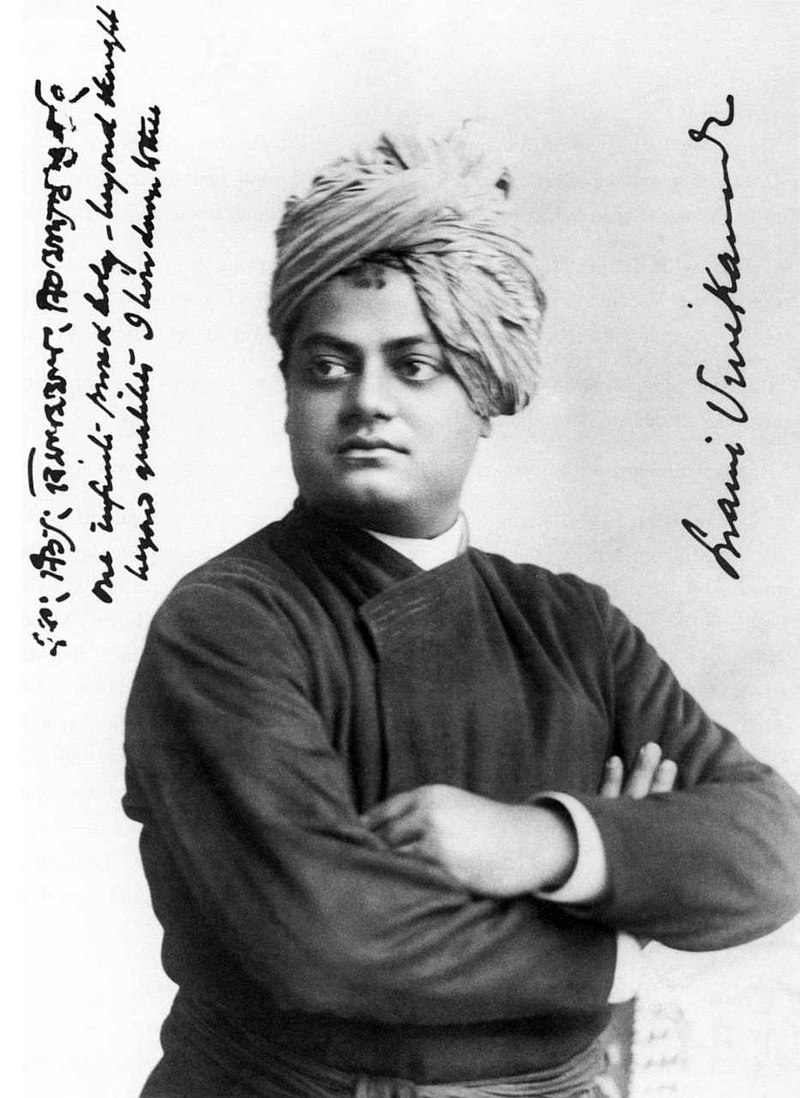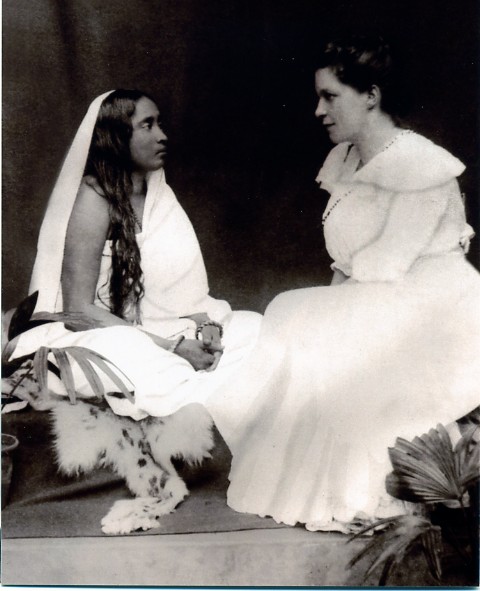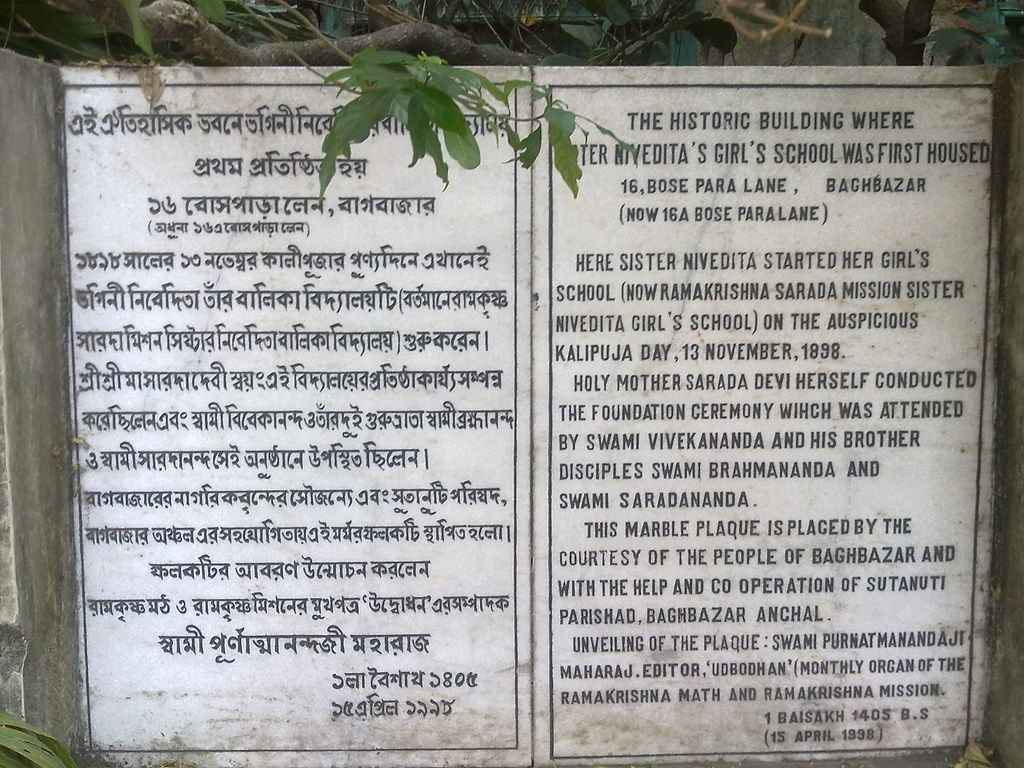Battling Plague, Famine & British Rule: The Irish Teacher Who ‘Gave Her All’ to India
An Irish teacher, after a meeting with Swami Vivekananda, donned the title of Sister Nivedita and spent her life caring for Calcutta’s poor during the plague and famine, and joined India in its freedom struggle.

Margaret Elizabeth Noble, an Irish educationist of Scottish descent, first met Swami Vivekananda in November 1895, while the philosopher and social reformer was on a visit to London.
Sitting in the drawing room of an aristocratic family, Swami Vivekananda was explaining the intricacies of Vedanta philosophy on a cold winter afternoon. Mesmerised by his teachings, Margaret Noble became his disciple.
He even gave her the name of Nivedita (meaning ‘dedicated to god’) after she became a disciple.
From Margaret Noble, she changed her name to Bhagini Nivedita, but many would famously know her as ‘Sister Nivedita’. Given her professional background, she was tasked by Swami Vivekananda to educate Indian women. He believed that formal education presented a cure to all the social evils plaguing Indian society at the time.
In his letter to her, Vivekananda wrote, “Let me tell you frankly that I am now convinced that you have a great future in the work for India. What was wanted was not a man but a woman, a real lioness, to work for the Indians, women especially.”
What came in the next decade and a half from Sister Nivedita was the very definition of social service.
She would not only serve the underprivileged residents of erstwhile Calcutta during the bubonic plague of 1898-99 with the utmost dedication, but also parts of undivided Bengal afflicted by the flood, famine, and finally, the freedom struggle till her untimely death at the age of just 43.

“One infinite pure and holy – beyond thought beyond qualities I bow down to thee.”
Tackling a deadly plague
The bubonic plague reached the ports of Calcutta (present-day Kolkata) on the backs of disease-carrying rodents swarming the trading ships that docked there.
Even though there were rumblings of an epidemic in the city by 1896 following an outbreak in areas like Howrah, the colonial authorities played down the nature and severity of it. Besides an inadequate understanding of the disease, some historians believe that authorities played down fears of an epidemic to protect the interests of the Imperial government and the mercantile class, who feared that a lockdown would result in an embargo of trade and commerce.
By May 1898, however, the plague had begun ravaging the city.
At that time, a few sannyasis of the Ramakrishna Mission (RKM) banded together to help those afflicted by the plague in and around Calcutta. Such major relief operations were spearheaded by Swami Vivekananda and his spiritual proteges, including Bhagini Nivedita.
The RKM also published a ‘Plague Manifesto’, which urged people not to give into fear, but take action by taking preventive and precautionary measures to keep the disease at bay. They also promised the public to help anyone in need.
As a coordinator, Sister Nivedita not only organised relief work, but dedicated herself entirely to the cause of aiding the underprivileged. After all, she was residing at Bosepara lane, which wasn’t very far from the shanties of Bagbazar, which suffered dearly during the plague.
During one night in those slums, according to Monidipa Bose Dey writing for Live History India, Sister Nivedita heard a “loud wailing from a nearby hovel”.
When she rushed over to see what had happened, she found that a child in the house had just died. According to Dey, she put the dead baby in her lap and remained silently seated, “a gesture that strangely seemed to give great comfort to the grieving family”.
Suffice to say, the incident moved her deeply.

‘We all stand and fall together’
Besides organising relief efforts, she also began making loud appeals for financial aid through some of the country’s leading newspapers. It goes without saying that she even castigated the colonial administration’s inadequate response to tackling the plague situation. Alongside Swami Sadananda of RKM, she began delivering lectures on the plague on the streets of Calcutta and at different social gatherings. In these lectures, she emphasised the need for cleanliness and the different precautions residents could take to avoid getting infected.
In these speeches, she also inspired many young Indians to become volunteers for the relief effort.
During one such speech at the city’s Classic Theatre on Beadon Street titled, ‘The Plague and the Duty of Students’, she asked, “How many of you will volunteer to come forward and help in the labour of cleansing huts and bustees [spelt Bastis or called slums]? In such matters, we all stand and fall together, and the man who abandons his brother is taken by despair himself. The cause of the poor is the cause of all today — let us assert it by practical action.”
This speech was directed more towards male university students who were in attendance on this day. After all, several women had already shown exemplary courage by coming out of the safety of their homes to join the RKM’s drive to clean the plague-infested parts of the city.
According to Monidipa Dey writing for Live History India, “The RKM’s relief work under Sister Nivedita’s strict supervision was highly organised. Daily, she distributed handbills that listed precautionary and preventive measures to fight the bubonic plague, to the common people. On one occasion, while distributing handbills, she noticed that the streets were filthy, and with no volunteers that day, she herself cleaned the roads. Seeing her doing the job of a sweeper, the young men in the locality came out with brooms and pitched in.”
Her relief work even received praise from the District Medical Officer in his official report. “During this calamity the compassionate figure of Sister Nivedita was seen in every slum of the Baghbazar [also spelt Bagbazar] locality. She helped others with money without giving a thought to her own condition. At one time when her own diet consisted only of milk and fruits, she gave up milk to meet the medical expenses of a patient.”
What stood out about her relief efforts was her determination to nurse and provide comfort for patients ailing from the disease with no regard for her own health. Dr RG Kar, an eminent physician at the time, paid tribute to her courage and compassion for victims of the epidemic, and talked about one instance when she nursed a child afflicted by the plague.
“That morning I had been to see a plague-stricken patient in a slum in Baghbazar. Sister Nivedita had come to enquire about the arrangements made for the patient and to take upon herself the task of nursing him. I told her that the patient’s condition was critical. Having discussed with her the possibilities of hygienic nursing in the slums of the poor people, I asked her to take precautions,” he recalled.
“When I went to visit the patient again in the afternoon I saw Sister Nivedita sitting with the child on her lap in the damp and weather-beaten hut in that unhealthy locality. Day in and day out, night after night, she remained engaged in nursing the child in the hut, having abandoned her own house. When the hut was to be disinfected, she took a small ladder and began white-washing the walls herself. Her nursing never slackened even when death was a certainty. After two days, the child lay in eternal sleep in the affectionate lap of that merciful lady,” he said.
Serving the people
When Nivedita was tasked by Swami Vivekananda with imparting education to girls, she toured England and America to raise money for a girls school.
After much back and forth, on 13 November 1898 during the auspicious Kali Puja, she opened a school for girls at 16 Bosepara Lane in the Bagbazar area of North Calcutta.
The school was inaugurated by Sarada Devi, the spiritual consort of Sri Ramakrishna Paramahamsa, and in the presence of Swami Vivekananda and other disciples of RKM.

Prior to starting this school, however, she would visit homes of the underprivileged and educate their daughters despite facing instances when the male members of the family would refuse her entry. Among her students were not just young girls, but also widows and adult women.
Aside from regular courses, she also taught them nursing, sewing and basic rules of hygiene, amongst other skills.
Her service to the people of Bengal didn’t end with the plague or school. During a massive flood in East Bengal in 1906, she organised relief efforts as well. According to some accounts, she walked miles “through knee-deep water and mud” to deliver relief material and console people in their moment of grief. Following the flood, the region suffered a massive famine in July 1906.
Despite her own fragile health, she once again made her way to East Bengal for relief work alongside the sannyasins of Belur Math. The Bengal famine had a tremendous impact on her, which she wrote extensively about in her book, Glimpses of Famine and Flood in East Bengal in 1906. Following her return from relief work, she suffered a serious bout of malaria.
‘…Sister Nivedita, who gave her all to India’
Deeply embedding herself in the plight of India’s underprivileged, Sister Nivedita saw up close the injustices perpetrated by the British colonial administration. She became more engaged with the still nascent struggle for independence.
Starting out, she maintained close ties with many of the region’s revolutionaries, including those of Anushilan Samiti, a secret organisation that supported revolutionary violence as the means for ending British rule in India. Through her various lectures, she exhorted India’s youth to fight for the cause of Indian independence. A major turning point in this regard was the Partition of Bengal organised by Lord Curzon, which proved to be a major catalyst in the freedom struggle.
She not only provided logistical and financial support for activists of the freedom struggle, but also used her contacts in the administration to obtain information and issue warnings to those in the crosshairs of the British Raj.
She also offered her support to the likes of Subramania Bharati, the Tamil poet and independence activist, Annie Beasent, an ardent supporter of home-rule for India, and was very close to Aurobindo Ghosh, a major figure in the early nationalist movement. She was also an editor at Karma Yogin, a nationalist newspaper started by Ghosh.
In fact, in an editorial for Karma Yogin, she once wrote, “The whole history of the world shows that the Indian intellect is second to none. This must be proved by the performance of a task beyond the power of others, the seizing of the first place in the intellectual advance of the world. Is there any inherent weakness that would make it impossible for us to do this? Are the countrymen of Bhaskaracharya and Shankaracharya inferior to the countrymen of Newton and Darwin? We trust not. It is for us, by the power of our thought, to break down the iron walls of opposition that confront us, and to seize and enjoy the intellectual sovereignty of the world.”
She passed away on 13 October 1911, aged 43, at Roy Villa in Darjeeling. Today, one can witness a memorial for her below the Railway station on the way to Victoria Falls (of Darjeeling). The words inscribed in her epitaph read — “Here lies Sister Nivedita, who gave her all to India”.
(Edited by Divya Sethu)
(All images courtesy Wikimedia Commons/Sister Nivedita)
Sources:
‘Sister Nivedita: Calcutta’s Anger of Mercy’ by Monidipa Dey; Published on 7 April 2020 courtesy Live History India
‘A ministering angel’ by Kabita Ray; Published on 2 February 2017 courtesy The Statesman
‘The 1899 Calcutta Plague: Through the Accounts of the Literature on and by Swami Vivekananda and Bhagini Nivedita’ by Sreejit Datta; Published in 2021, Writing the Pandemonium: Perspectives on Pandemic Literature (Ed. by Dr. Rakhi Vyas)
This story made me
-
97
-
121
-
89
-
167
Tell Us More
We bring stories straight from the heart of India, to inspire millions and create a wave of impact. Our positive movement is growing bigger everyday, and we would love for you to join it.
Please contribute whatever you can, every little penny helps our team in bringing you more stories that support dreams and spread hope.



















